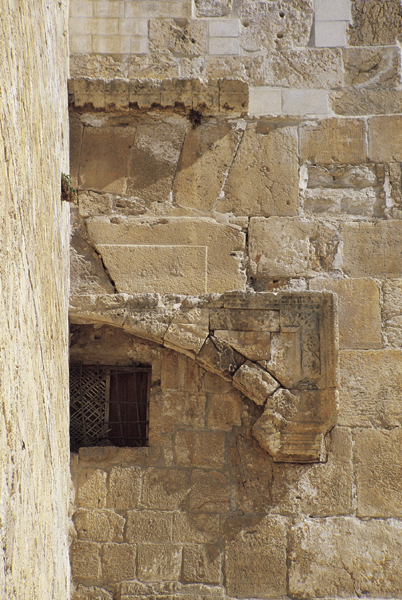Image Details

David Harris
The smooth chiseled stones (called ashlars) that formed the original gate’s lintel are visible between two applied Omayyad decorations. A smaller, more roughly carved stone (highlighted in the drawing of Temple Mount wall) bears a Latin inscription which indicates that the stone originally served as the pedestal of a Roman emperor’s statue. The stone was only later incorporated in the Temple Mount wall—upside down!
The inscription reads “To Titus Aelius Hadrianus Antoninus Augustus Pius, Father of the Country, Pontifex, Augur, by Decree of the Decurions.” The string of names may have confused at least one Byzantine visitor to the Holy Land, known simply as the Pilgrim of Bordeaux. The pilgrim apparently saw this stone in 333 A.D., when it was still attached to a statue on the Temple Mount. He misidentified the statue as a representation of Emperor Hadrian, when in fact the inscription refers to Hadrian’s adopted son and succesor, Antoninus Pius (138–161 A.D.), who used “Hadrian” as part of his name. Although the pilgrim attempted (unsuccessfully) to identify the monuments on the Temple Mount, he describes no Roman temple in that location—a strong indication that none stood there.
